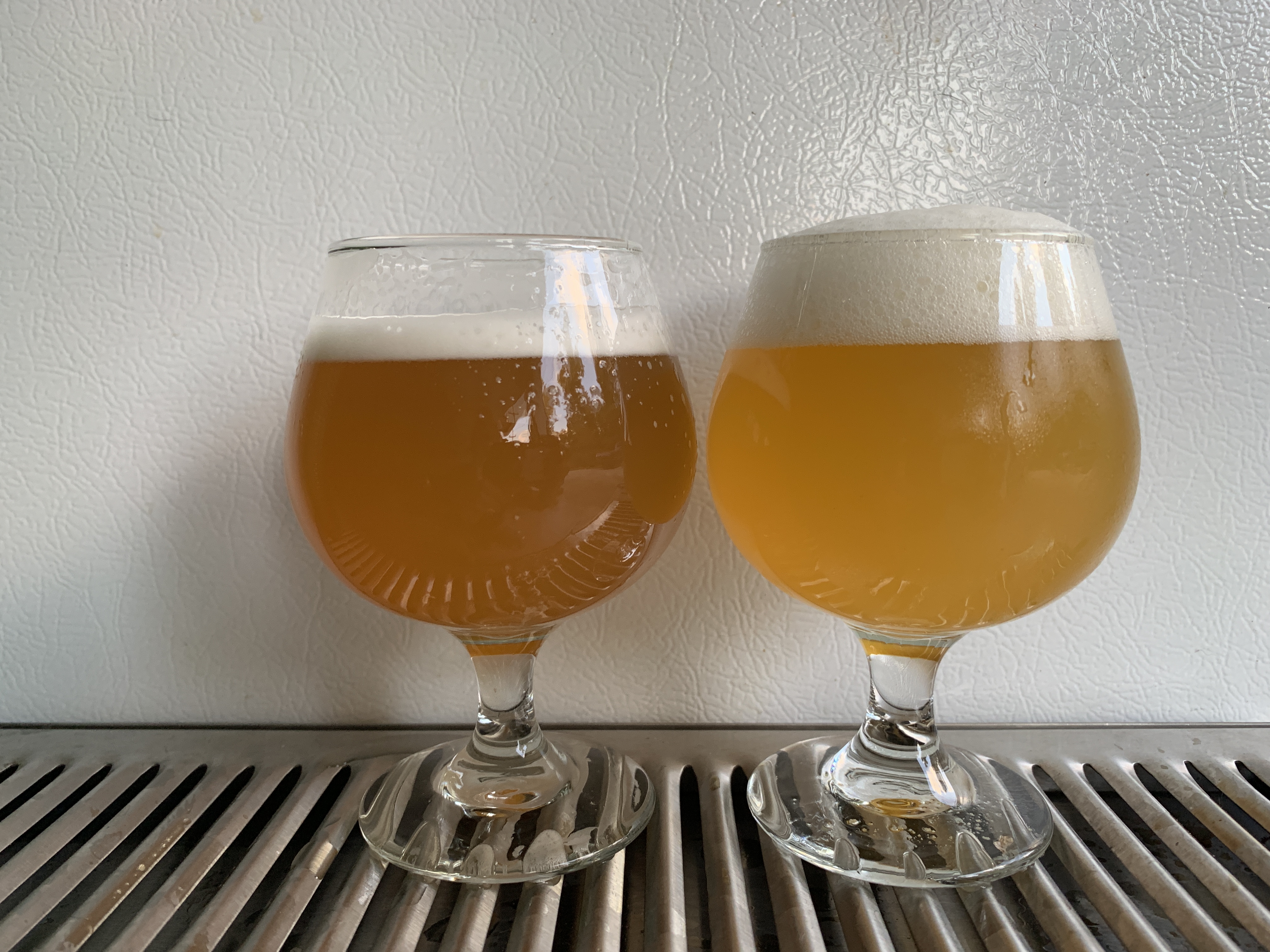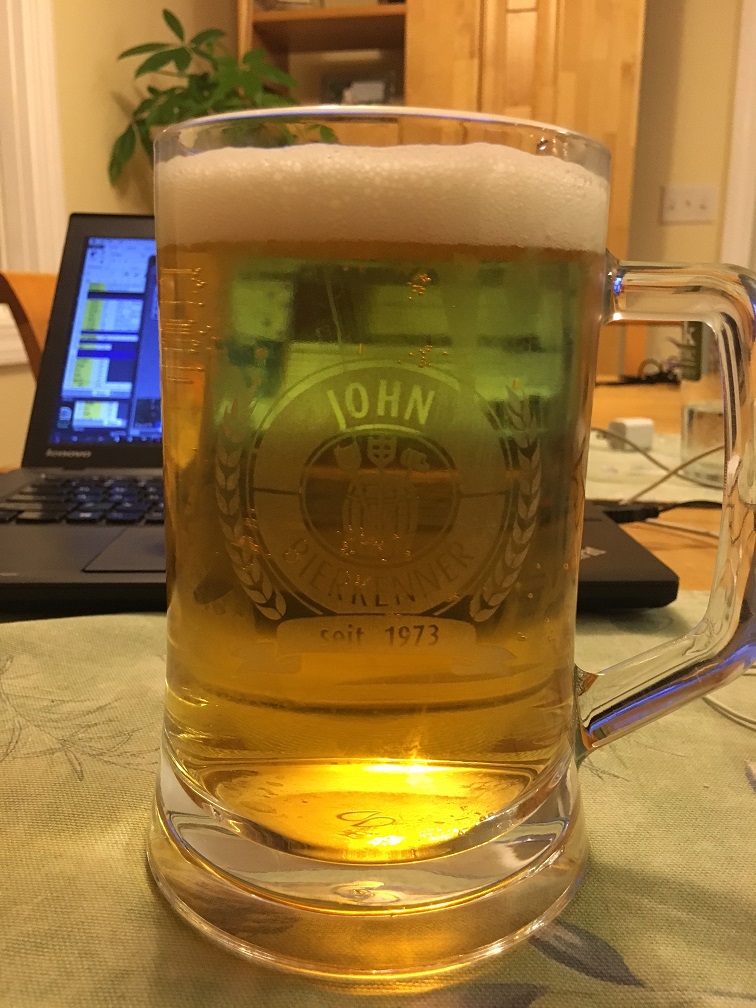I have an experiment to share with you all. There have been several experiments about oats vs wheat in neipa - usually flaked variety, But I have yet to stumble across malted oats vs wheat malt. I decided to do my own. I brewed two seperate small batch neipas:
80% TF Golden Promise
18% Crisp Malted Oats or Weyerman White Wheat Malt
2% Honey Malt
(Normally I decrease oats and use chit but I did not want to skew the foam/body comparison)
1oz gal WP of Citra
1oz gal dryhop of Citra on Day 3
Since these were small batches I could not do my usual cold side LODO but I figured it would be okay since each would have roughly the equivalent exposure to oxygen. After 24hrs dryhop (still some SG left), I transferred each to a uKeg to spund w/ a CO2 cylinder for backup. In day 14, no discernible difference, day 21 - oat had better mouthfeel & foam (shaving cream vs big bubbles for wheat) and malted oats slightly darker.
Here is day 28 - the difference in oxidation characteristics is shocking. Malted oats is much darker, the hops aroma has taken a huge hit BUT the mouthfeel & foam are significantly more "desirable". Malted wheat batch has okay foam that lingers for a minute and thin body, but the hop aroma & flavors are popping like crazy vs stale/oxidized for the malted oats brew.
View attachment 646560
I was originally planning to take pics every two weeks up till 8, but I feel like this is enough data for me to stop the experiment.
I have still have some malted oats to work through, but I will not be using in the future. I plan to switch to flaked barley for the body/head component after that and test again vs wheat malt.
Tangent - Another thing I am trying to quantify is the impact of polyphenols in hops on mouthfeel. The brew I made a while back that was solo dryhop of 1.5oz per gal of galaxy (known for high polyphenols) had the best mouthfeel of any beer I have ever made. It had malted oats but it was a split batch and the other had el dorado, citra, mosaic dryhop - the mouthfeel/body wasnt even close to the galaxy batch.
Cheers!















































![Craft A Brew - Safale BE-256 Yeast - Fermentis - Belgian Ale Dry Yeast - For Belgian & Strong Ales - Ingredients for Home Brewing - Beer Making Supplies - [3 Pack]](https://m.media-amazon.com/images/I/51bcKEwQmWL._SL500_.jpg)















